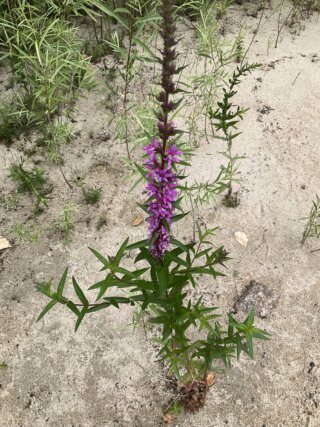Lythrum salicaria
Description
- Introduced from Europe and Asia to the Atlantic coast of North America in the early 1800’s.
- Up to 2 m tall with several stalks covered in pinkish-purple spike-like flowers.
- Flowers bloom from late June to September.
- Square 4-sided stem, lance-shaped leaves that are arranged opposite from each other.
- Grows in wet/riparian areas.
Consequences of invasion
- Forms dense stands with thick mats of roots, which degrades wetland habitats.
- Decreases biodiversity.
- Large infestations can clog irrigation canals, degrade farmlands, and reduce forage values of adjacent pastures.
Status in the CKISS region
- Purple loosestrife is classified as Contain on the CKISS Annual Priority List.
- There are numerous sites with purple loosestrife in the Nelson and Slocan Invasive Plant Management Areas (IPMAs), so the goal in those areas is to contain current infestations and prevent it from spreading further.
- If you notice this plant growing outside of its containment area, please report it!
- There is very little purple loosestrife elsewhere in the CKISS region, therefore it is feasible to eradicate plants in these areas.
- To learn more about how CKISS classifies and manages invasive species, see our Invasive Species Priority Lists page.
Integrated pest management options
- The best time to remove purple loosestrife is June, July, and early August, when flowers can be seen but before seeds have formed.
- Dispose of Purple Loosestrife by bagging and disposing at your local landfill. See our In the Garden page to learn more about proper disposal.
- Biocontrol agents are available in BC for this plant.
- Become PlantWise and use Grow Me Instead to choose non-invasive lookalikes for your garden.




